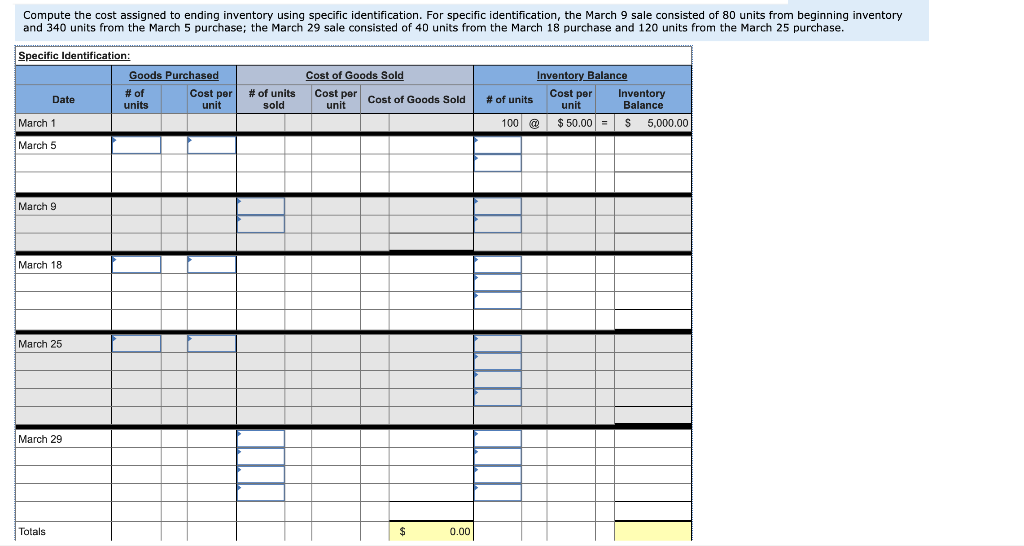Question
Required information [The following information applies to the questions displayed below.] Warnerwoods Company uses a perpetual inventory system. It entered into the following purchases and
Required information
[The following information applies to the questions displayed below.] Warnerwoods Company uses a perpetual inventory system. It entered into the following purchases and sales transactions for March.
| Date | Activities | Units Acquired at Cost | Units Sold at Retail | |||||||||
| Mar. | 1 | Beginning inventory | 100 | units | @ $50.00 per unit | |||||||
| Mar. | 5 | Purchase | 400 | units | @ $55.00 per unit | |||||||
| Mar. | 9 | Sales | 420 | units | @ $85.00 per unit | |||||||
| Mar. | 18 | Purchase | 120 | units | @ $60.00 per unit | |||||||
| Mar. | 25 | Purchase | 200 | units | @ $62.00 per unit | |||||||
| Mar. | 29 | Sales | 160 | units | @ $95.00 per unit | |||||||
| Totals | 820 | units | 580 | units | ||||||||
3. Compute the cost assigned to ending inventory using (a) FIFO, (b) LIFO, (c) weighted average, and (d) specific identification. For specific identification, the March 9 sale consisted of 80 units from beginning inventory and 340 units from the March 5 purchase; the March 29 sale consisted of 40 units from the March 18 purchase and 120 units from the March 25 purchase.

 .
. 

Step by Step Solution
There are 3 Steps involved in it
Step: 1

Get Instant Access to Expert-Tailored Solutions
See step-by-step solutions with expert insights and AI powered tools for academic success
Step: 2

Step: 3

Ace Your Homework with AI
Get the answers you need in no time with our AI-driven, step-by-step assistance
Get Started


